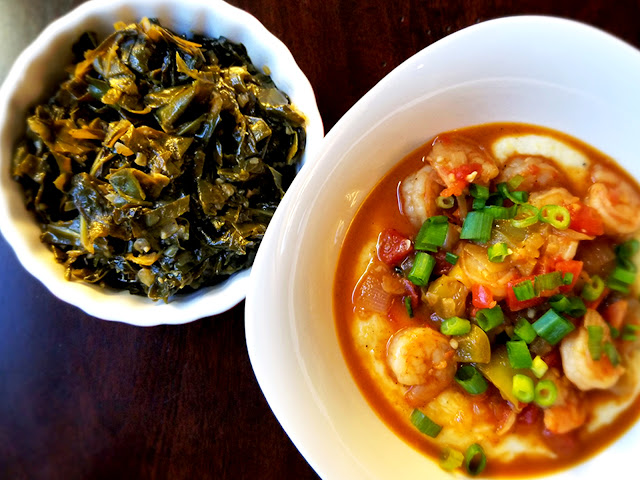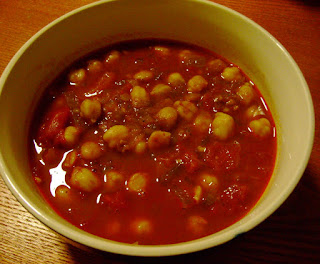4 reasons pasta dishes are better in the Instant Pot
When I first bought an Instant Pot, I envisioned using it primarily for beans and braised dishes. Five years later, I can say that I do use it for those things, but the surprising thing I make most often with my IP is pasta. Here are 4 reasons pasta dishes are better in the Instant Pot.
 |
| Penne with vodka sauce |
1. It only uses one pot.
This one is pretty obvious, but it deserves some elaboration. Making pasta the traditional way involves monitoring at least 2 pots, one to boil the pasta and one to make the sauce. Using the IP, you are dirtying and babysitting half the number of pots! You can go one step further and make an entire one-pot meal if you add protein and veggies into the mix (which my recipes often do).
2. Flavors are infused throughout the dish.
As opposed to the traditional route, where you combine the pasta and sauce after cooking, when you make a pasta dish in the IP, the sauce and pasta cook together. Flavors from the sauce are pressure-infused into the core of the pasta.
3. It cooks with high, even heat without boiling.
Using the pressure cooker function on the IP means that you are raising the boiling point of water. Your pasta dish will cook at a higher temperature than traditional methods, but without boiling, protecting delicate ingredients from jostling. The pressure cook function forces steam into the pasta, cooking it very evenly and preventing sticking. If you were to cook a one-pot pasta dish on the stovetop, it would take much longer and you would have to stir it near constantly to prevent sticking and burning. There's no stirring at all while the IP is cooking!
4. Starchy cooking liquid helps sauces cling to pasta and stay smooth.
You may have seen recipes that call for mixing a bit of the starchy pasta cooking liquid into a sauce after cooking the traditional way. Those starches thicken the sauce and help it cling to the pasta. Cooking pasta in the IP is like doing this on steroids. All of the starch from the pasta is concentrated in a smaller amount of water. Not only will it make sauces hold on to your pasta much better, but the concentrated starch will take the place of a roux when making creamy sauces. Traditionally, when making a creamy white sauce or mac and cheese, you would make a flour-based roux before stirring in milk and/or cheese. In the case of the IP, the concentrated pasta starch serves as a built-in roux, allowing you to stir milk and cheese directly into your pasta after cooking. The starch keeps your sauce emulsified and prevents it from breaking or becoming grainy.
How do you make pasta in the Instant Pot?
Below, you'll find all of my recipes for Instant Pot pasta. You may have some of your own favorite pasta recipes that you would like to convert for IP cooking, so here is the general pattern I follow when developing IP pasta recipes.
First, sauté anything that needs to develop some color on it, like meat, mushrooms, onion, and/or garlic in the IP. Next, add all other sauce ingredients, like seasonings, tomato sauce, etc. If your recipe involves milk, cream, and/or cheese, stir it in after pressure cooking so it doesn't break. The residual heat will meat cheese almost instantly.
Next, consider your liquid to pasta ratio. This is crucial because you won't be draining your pasta after cooking. You need just the right amount of liquid so that the pasta is fully hydrated, but there is only a little remaining liquid after its finished cooking. The general ratio is 1 lb pasta to 4 cups water. If you are adding other liquid ingredients like tomatoes or tomato sauce, reduce the liquid a bit (maybe a half cup). Adding most proteins and veggies will not significantly change your ratio as long as they are not super absorbent or release a lot of liquid if cooked. If, when your pasta is finished cooking, you find it has too much liquid, simply let it stand for a few minutes. Excess liquid will be absorbed and the starches will thicken as they cool. If you find it is a bit too dry, especially if you are not serving immediately, just stir in a little extra water to loosen the sauce.
Virtually all traditional (semolina) pastas I've worked with cook in 4 to 5 minutes in the IP, no matter the shape or size. If you're trying to create your own IP pasta recipe, I recommend starting by cooking for 4 minutes. If you find your pasta is underdone, simply simmer in the IP for a couple more minutes. Make a note to yourself to cook it for 5 minutes next time.
Caveats
I've only tested these recipes with traditional semolina wheat pasta. Readers have indicated that firm gluten-free pastas can work, but the cook time should be lowered to around 2 minutes. Please do report back if you try this out!
All shapes of pasta seem to work, except angel hair. It is too thin and delicate to cook in the IP without turning into mush.
Here are all of my Instant Pot pasta recipes:
Mac and cheese with secret cauliflower
Spinach and artichoke mac and cheese
Vegetarian spaghetti bolognese
Unstuffed mushroom mac and cheese
Pasta toscana (creamy pasta with roasted cauliflower, Italian sausage, and spinach)






Comments
Post a Comment